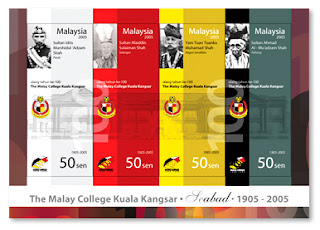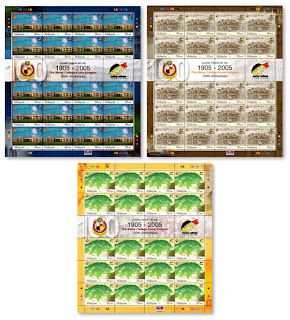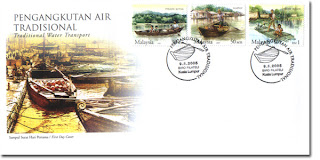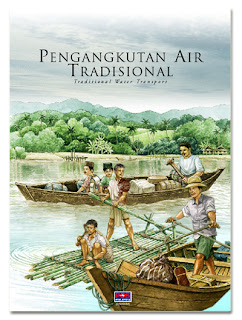 The Malay College Kuala Kangsar (MCKK) is the premier and first fully-residential school in Malaysia. Established on 2nd January 1905, it was originally known as the Malay Residential School of Kuala Kangsar. It was an all Malay boys' school located in the Royal Town of Kuala Kangsar, Perak.
The Malay College Kuala Kangsar (MCKK) is the premier and first fully-residential school in Malaysia. Established on 2nd January 1905, it was originally known as the Malay Residential School of Kuala Kangsar. It was an all Malay boys' school located in the Royal Town of Kuala Kangsar, Perak.The school was the brainchild of Mr. R J Wilkinson, then Inspector of Schools for the Federated Malay States. In a letter to the Resident-General dated 24th February 1904, he wrote about "establishing at a suitable locality in the F.M.S., a special residential school for the education of Malays of good family and for the training of Malay boys for admission to certain branches of Government service".
 Its formation was enthusiastically supported by the then Rulers of the Federated Malay States namely Sultan Idris Murshidul 'Adzam Shah of Perak, Sultan Alaiddin Sulaiman Shah of Selangor, Yam Tuan Tuanku Muhamad Shah of Negeri Sembilan and Sultan Ahmad Al-Mu'adzam Shah of Pahang.
Its formation was enthusiastically supported by the then Rulers of the Federated Malay States namely Sultan Idris Murshidul 'Adzam Shah of Perak, Sultan Alaiddin Sulaiman Shah of Selangor, Yam Tuan Tuanku Muhamad Shah of Negeri Sembilan and Sultan Ahmad Al-Mu'adzam Shah of Pahang.Since its inception, more than 5,000 boys (and 2 girls) have had the privilege to enter the gates of The MCKK. Though it was initially founded to educate the Malay elites, it changed dramatically as a result of rising Malay nationalism since 1947. Today, selected Malay boys from all walks of life and aged from 12 to 17 from all over Malaysia are educated in The MCKK.
The MCKK has been the school for many prominent Malaysian such as Kings, Sultans, Prime Ministers, Ministers as well as senior officials in the Government and leading figures in the private sector. The MCKK boys would undoubtedly fill many of the pages of Who Is Who in Malaysia.
MCKK celebrated its Centennial Anniversary on 26th March 2005. Attended by royalties, dignitaries, Old Boys and townspeople, The Malay College Kuala Kangsar or fondly referred to as the Eton of the East was also declared a National Heritage by His Majesty the Yang di-Pertuan Agong. His Majesty re-affirmed that the Malay Rulers "...shall remain as Royal Patrons of The Malay College Kuala Kangsar for as long as the sun, the moon and the stars move across the Heavens."
The most recognizable, oldest and famous landmark of MCKK is none other than the imposing 2 storey building with pseudo Greco-Roman architecture fronted by a vast playing field. It is known as the Big School. The official opening of the building took place on Saturday 11th December 1909 and officiated by Sultan Idris Murshidul 'Adzam Shah, the Sultan of Perak. In 1955, the West and East Wings were added and together they make up what is now called the Big School. The Big School is currently the main hostel for the seniors. The Big School remains as a majestic edifice of The Malay College.
 The Prep School (Preparatory School), built in 1912, is smaller but with equally prominent features. Built in pseudo Greco-Roman architecture too, this 2 storey "L" shaped building houses the first year students. Here, students are taught and prepared for their future life in MCKK. The Prep School is the only hostel located within the present Administrative Block. The hostel has its own dining hall, common room and playing fields.
The Prep School (Preparatory School), built in 1912, is smaller but with equally prominent features. Built in pseudo Greco-Roman architecture too, this 2 storey "L" shaped building houses the first year students. Here, students are taught and prepared for their future life in MCKK. The Prep School is the only hostel located within the present Administrative Block. The hostel has its own dining hall, common room and playing fields.
A prominent feature of the Big School is the Big Tree. Located in front of the East Wing, it was said to be as old as the school itself. It is of the Samanea saman species, and commonly known as the rain tree, coco tamarind, acacia preta, French tamarind, saman, monkey pod or 'pokok pukul lima". It came from tropical America, and has a large dome-shaped canopy. It can grow up to 180 feet tall with a crown up to 240 feet across. As the leaves age, the color changes from pale green to bright yellow and then to a golden color before shedding. The flowers are small pinkish green.
To the boys of MCKK, Big Tree is more than just a tree. It is a monument that every living Old Boy can easily relate to. Throughout its existence, it has been a landmark for many a congregation, and serves as both a meeting and parting point. Stories pertaining to Big Tree, true or mythical, are plentiful.
 Technical Details
Technical DetailsDate of Issue : 30-Aug-2005
Stamp Value : 30 Sen; 50 Sen ( 2 Designs )
Stamp Size : 40 mm X 30 mm
Miniature Sheet Value :50 Sen ( 4 Designs )
Miniature Sheet Size : 100 mm X 70 mm
Stamp Size in Miniature Sheet : 22 mm X 51 mm
Perforation : 14
Sheet Content : 20 Stamps
Paper : SPM Watermarked, Phosphor Coated
 Printing Process : Lithography
Printing Process : LithographyPrinter : Percetakan Keselamatan Nasional Sdn. Bhd
Stamp Designer : Reign Associates Sdn. Bhd
First Day Cover Value : 30 Sen
Folder Value : RM 5.00












